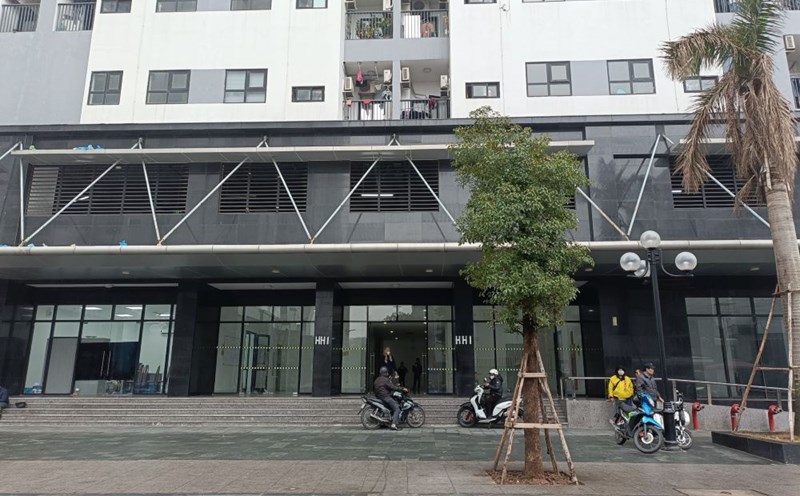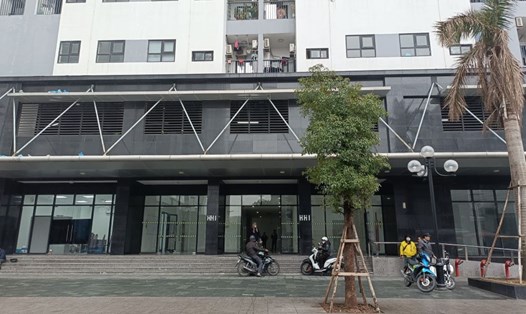Responsibilities of each ministry, branch and locality
On the morning of March 14, at the headquarters of the Ministry of Finance, during an exchange and information sharing with the press about the results of the General inventory of public assets at agencies, organizations, units, and infrastructure assets invested and managed by the State, Mr. Nguyen Tan Thinh - Director of the Department of Property Management (Ministry of Finance) emphasized that including public assets in the handling plan is a mandatory requirement. Accordingly, ministries, branches and localities must clearly identify the content of work and the responsibility of each organization and individual in each implementation stage.
From planning, approving plans to organizing implementation, everything must be clarified. First of all, it is necessary to review and re-evaluate the current situation of unused or ineffective use of public assets. According to statistics by the end of 2024, there were 11,034 houses and land that had not been properly exploited. Among these, there are many works such as agency headquarters, schools, health stations, etc. scattered in many localities.
Explaining the reason why these assets have not been used or are not used for the right purposes, Mr. Nguyen Tan Thinh said: "Some assets are stuck in mechanisms and policies, some are due to organizational failure to implement them decisively, some are related to planning. For example, some headquarters want to be sold but have to adjust the planning in advance to be able to transfer, otherwise no investor will be interested. If the planning is not approved, the property cannot be sold, cannot be used, and so continues to be left vacant, causing waste. Therefore, it is necessary to clearly identify the cause and have specific solutions. If there are problems with the law, they must be revised, if there are problems with the planning, the responsibility belongs to which agency to handle, and if the problem lies in the organization and implementation stage, the progress must be accelerated."
Strengthen inspection and supervision to avoid waste
Another important point is the work of inspection, supervision and handling responsibilities. The Ministry of Finance has requested ministries, branches and localities to strengthen inspection and examination and strictly handle cases of slow implementation. According to the plan, before April 5, the units must send a first report on the progress of handling unused public assets. Then, periodically every month and every quarter, the units continue to report to the Ministry of Finance for synthesis and specific instructions, speeding up the processing progress. If any unit is late or does not implement the plan properly, there must be clear measures to handle responsibility.
Currently, many public headquarters and real estate are vacant and not used effectively, but there is no breakthrough solution to solve this problem. Therefore, the Ministry of Finance has sent documents to ministries, branches and localities requesting the development of specific handling plans. The goal is to focus on handling the 500 largest and most valuable houses and land with backlogs in the first phase. Localities must make a list and provide a specific roadmap to thoroughly resolve the issue.
Reviewing surplus assets after the merger for effective use
Regarding the issue of public assets in the field of science and technology - the Ministry of Finance is currently studying and adjusting to create more favorable conditions for scientific research institutions. For example, the use of assets for business, joint ventures, and associations will be decentralized more strongly, giving decision-making power to units directly managing. At the same time, regulations on administrative procedures will also be simplified to help scientific and educational institutions effectively exploit facilities for research and development. For example, for scientific research institutions, after completing research tasks, assets can be assigned to the host unit to continue exploiting, developing and commercializing research products.
Regarding the restructuring of the apparatus and the impact on public assets, when streamlining the payroll, the number of cadres, civil servants and public employees decreases, leading to changes in the use of public assets. Currently, the Ministry of Finance is coordinating with relevant agencies to review the amount of surplus assets, thereby proposing a suitable use plan.
The Ministry of Finance proposes a number of specific options:
Agencies must clearly identify which stage each asset is stuck in: planning, policy mechanisms or implementation organization.
If the planning is not suitable, it is necessary to propose adjusting the planning in a more flexible direction.
For assets that are no longer in need of use, it is necessary to consider the form of auction, lease, or conversion of land use purposes.
If any ministry, branch or locality is slow in handling, it must stipulate specific responsibilities and take handling measures.











